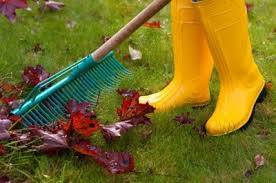Your September Garden Checklist
Given the extreme weather we’ve been having – from floods and ice storms to reports of tornadoes – it’s difficult to know what September has in store as I write this in early August.
Will the weather gods smile down and give us a month filled with balmy Indian-summer days?
Or will September feel winter’s looming grip just around the corner? Either way, September is the perfect time to start getting your outdoors ready for the big chill.
Begin by putting together an attractive autumn planter using the best of the fall season –ornamental cabbages and kales, mums, cora bells, verbena and sedum. Hopefully this may inspire you to continue with garden jobs that are less immediately rewarding.
Collect seeds for next spring and harvest herbs for drying and other ripened vegetables.
If your hostas are the size of Mini Coopers now is the time to divide and conquer. Overgrown perennials can flower poorly and become floppy. Fall is the best time to divide perennials and share them with neighbours or to plant elsewhere. Water the plant well a day or two before digging it up. Try to divide on a cloudy day as hot sun will stress plants.
Now is the time to plant spring and summer flowering perennials as well as new trees and shrubs allowing six to eight weeks for roots to form before winter’s frost sets in. Be sure to add compost or manure to your garden beds.
While this is easy to neglect, watering trees and shrubs until the ground freezes is an important task as it helps them better weather the ravages of winter.
Don’t let fall leaves go to waste. Shred collected leaves and bag them to be used as winter mulch.
Pull weeds before they go to seed to reduce the amount of weeds your lawn and garden will have next year.
Don’t forget to turn off your outside water taps. Store hoses and sprinklers. Clean and store or cover bird feeders, gardening tools, water features. Empty and clean clay containers. Bring them indoors to protect them from cracking.
If you’re a big fan of the ‘Stinking Rose’ otherwise known as garlic then you will want to find a sunny spot to plants your cloves. Plant cloves eight centimetres deep and 15 centimetres apart. Expect to harvest the following July.
Root vegetables such as carrots and parsnips can be harvested all winter. Remove top foliage from the plants and cover them with a 15-centimetre-thick mulch of leaves or straw. Throw an old piece of carpeting on top and let the snow fall as it may. Lift the coverings to dig out veggies as needed.
Feed your lawn with organic lawn fertilizer in the fall. Typically, these fertilizers while more expensive up front are cost effective in the long run as they require fewer applications in addition to decreasing the need for pest controls and promoting better growing conditions. Or you can try making some with your very own compost. Fill a bucket or container one-quarter full with compost and top up with water. Leave for three days and then strain the mixture. Dilute the compost tea with water before spraying your lawn. Also, remember to aerate your lawn as well.
While none of these suggestions will ward off winter’s arrival, know that your lawn and gardens will be better off for making the effort come spring.
The National Association of Green Agents and Brokers (NAGAB) provide a Greenbroker and Greenagent certification program to Realtors across Canada. To get more information or to sign up for a course, visit www.nagab.org. Elden Freeman M.E.S., AGB, broker is the founder and executive director of the non-profit organization. 1-877-524-9494 Email elden@nagab.org.
